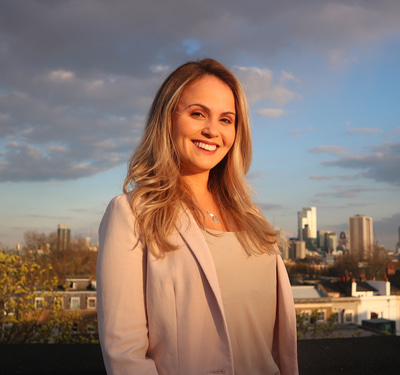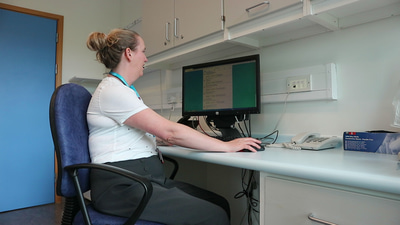- OT
- Industry
- Equipment and suppliers
- Supporting clinical decisions in triage
Industry profile
Supporting clinical decisions in triage
Dr Mariane Melo, chief medical officer at Dem Dx, which is using AI to develop a clinical reasoning tool, tells OT about the benefits that technology can bring to triage

Dr Mariane Melo
29 November 2021
COVID-19 has accelerated an existing challenge in triage. It gave us a big opportunity to try new technologies and ways of working in eye care, which is exciting as it accelerated something that would have happened in the future. It is not positive to think that there is a big backlog of patients that need to be seen for examinations and check-ups. However, it was definitely something that advanced the implementation of new technologies.

The Government is encouraging optometrists to take more responsibility with triage, recognising red flags, and providing the right referrals at the right times, to the right specialists. But it is not going to happen very fast if we don’t have support from technology. Some optometrists have been working on eye examinations for their whole lives, so they might not be used to assessing acute conditions.
Technology can support and enhance their abilities – never replacing clinical judgement – but augmenting their clinical decisions and supporting them with answers to questions, such as, what is the best time to refer these patients? Which patients can I advise and treat here in the High Street? I think triage technologies will be very important to support the transformation of the eye care service.
I believe that we are only going to achieve a good feat of technology when we enhance the abilities and skills of the healthcare professionals who know the patients
A big challenge in implementing triage technology is that the referral system is not unified; different services use different platforms. One thing that would help to implement these new technologies would be the implementation of a unique platform that gets referrals from all High Street optometrists, GPs, and primary care services into the hospitals. That would facilitate referrals but also the implementation of technologies that can filter and support clinical decisions.

The biggest opportunity here is that the new services being developed are giving more autonomy to the optometrist. Right now, we need to support clinical decisions so no-one feels overwhelmed with this change in the role of the primary care service. This is what Dem Dx is trying to address. We are trying to give information, adding technology with the expertise of someone who has the clinical experience and judgement, to identify when a patient’s issue needs referral.
I believe that we are only going to achieve a good feat of technology when we enhance the abilities and skills of the healthcare professionals who know the patients.
Behind the scenes: developing a triage tool
We are creating a clinical decision-making support tool for optometrists, nurse practitioners, and other healthcare professionals who are not doctors. They are then able to support initial assessments, diagnoses and management before the patient sees the ophthalmologist or doctor, if they need to see them. The platform has several clinical decision trees that support history-taking from the most general symptoms to the most specific ones, and shows which investigations the healthcare professional should carry out at each stage.
Dem Dx created the platform and tested it in paediatric A&E in Moorfields, which has a nurse-led triage. We saw that we reduced the time to assessment by around 30%, and total waiting time by 10%. We increased the number of investigations ordered or performed by nurses by 65%. That means that, in using this technology, the nurses felt more confident to take more clinical decisions, which could be one of the reasons why we saw reduced waiting times.
We are continuing to develop this platform with machine learning algorithms – a current project ongoing with Moorfields – where we are collecting data from the adult A&E. For this, we received funding from the National Institute for Health Research (NIHR) artificial intelligence awards. We are also developing the machine learning algorithms and mapping what the consultants would do with each patient, and where the best place for them to be seen would be. Our idea is to develop this platform in collaboration with Moorfields, gaining all the expertise from the ophthalmologists.
We think the biggest impact will come from implementing this platform in primary care, with optometrists, GPs, or general A&Es, who don’t have the same detailed knowledge on the specifics of ophthalmology.
- As told to Kimberley Young.
Advertisement

Comments (0)
You must be logged in to join the discussion. Log in